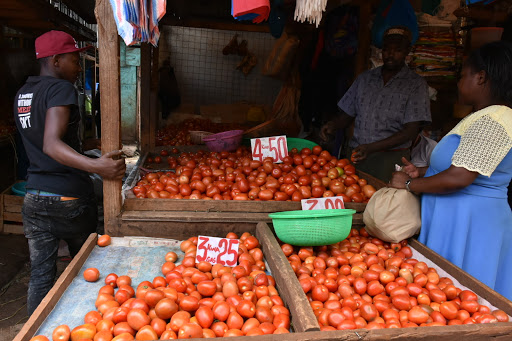
The Kenya National Bureau of Statistics (KNBS) monthly Consumer Price Index released on January 31 shows Kenya’s overall inflation rate stood at 5.39%.
The index measures the average change in prices over time with respect to goods and services.
This represents a consistent four month decline in Kenya’s inflation rate from a high of 6.91% in September 2021 and a marginal year-on-year decline from 5.69% recorded in January 2021.
The above notwithstanding, the overall CPI applicable to the period increased by 0.31 per cent to 118.642 from 118.274 in December 2021.
This was largely occasioned by marginal increases in food and non-alcoholic beverages and furnishings, household equipment and routine household maintenance by 1.07 and 0.69 points respectively. The increases, however, were partially offset by decreases in housing, water, electricity, gas and other fuels and transport of 0.75 and 0.11, respectively.
The decline in the rate of inflation is welcome news to the Kenyan populace as it signals a strengthening economy due to increased purchasing power.
However, while the overall inflation position is positive and well within Central Bank of Kenya desired average of 3.5% and 7.5%, a closer look at the data suggests that the ordinary Mwananchi may not have much to celebrate.
This is primarily due to increases in the cost of basic food commodities such as sifted maize flour, vegetables and fruits which may disproportionately impact low to middle income households resulting in increased financial burdens. It is hoped, however, that the anticipated drop in electricity prices following President Uhuru Kenyatta’s directive with respect to the reduction in electricity tariffs will offset financial constraints arising from the increases in prices of basic food commodities.
Despite declining inflation rates in Kenya, the International Monetary Fund’s (IMF) 2022 World Economic Outlook forecasts tough times ahead for developing and emerging economies on the back of steep increases in oil and gas prices and moderate increases in food prices.
Specifically, the IMF anticipates that global oil and gas prices will increase by 12% and 58% in 2022 due to supply-demand imbalances while food prices will increase by 4.5% within the calendar year due to decreased agricultural outputs. These increases are expected to have a disproportionately negative impact on developing and emerging economies that are more vulnerable to volatile global prices, particularly in relation to imported commodities. In addition, supply chain disruptions due to emerging COVID-19 variants may further worsen the global economic position.
Given the cautionary assessment outlined in the IMF’s 2022 World Economic Outlook, it may be necessary for Kenya to closely monitor the global economic position with a view to accurately predict and mitigate any potential movements that may have a negative impact on the Kenyan economy.
Karen Kandie

